
SpaceX Lunar Tours: Space exploration has captivated humanity for generations, and with technological advancements propelling us further into the cosmic frontier, the dream of lunar tourism is edging closer to reality. At the helm of this bold leap is SpaceX, a company renowned for its innovative approach to space travel. Grounded in a mission to make life multiplanetary, SpaceX is extending the invitation to experience one of humanity’s oldest fascinations: the moon. Through meticulous planning and revolutionary technology, the possibility of circumlunar voyages is transitioning from science fiction to an imminent future.
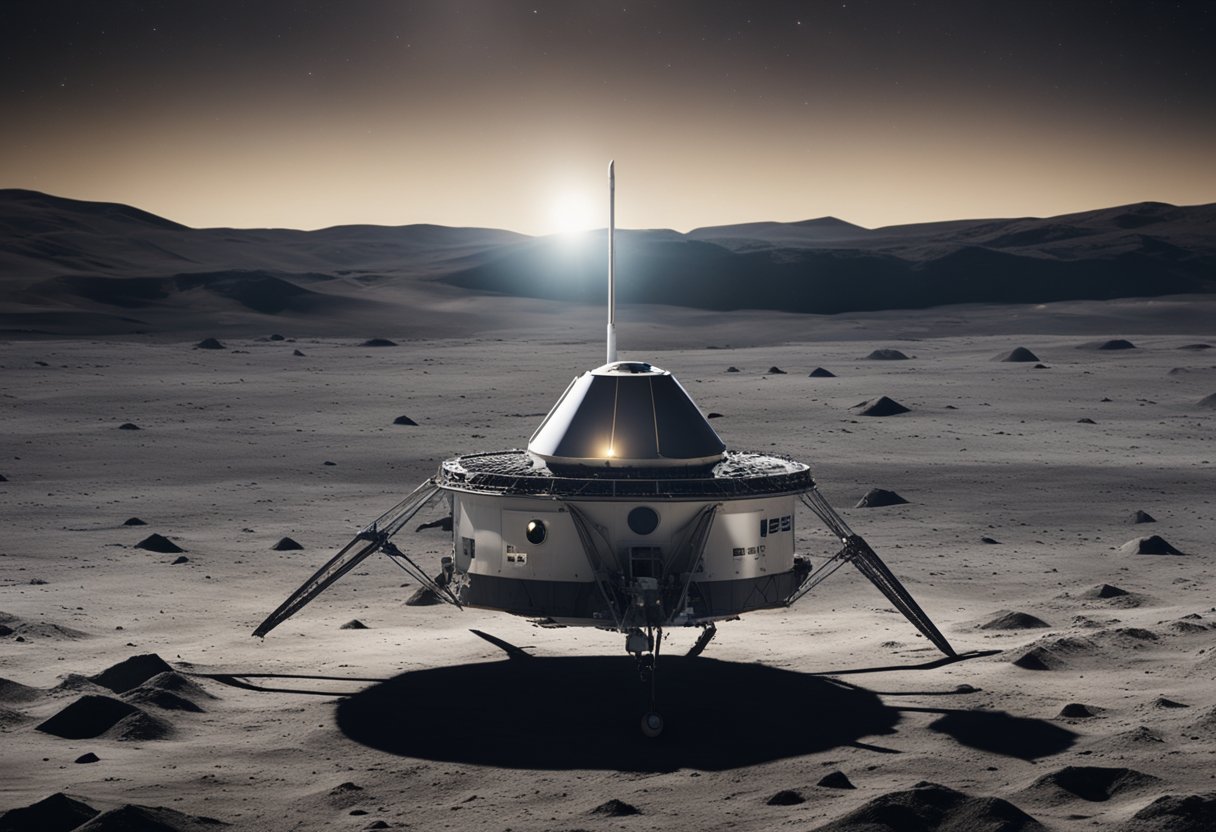
The anticipation of a journey to the moon is fuelled by the collaboration between SpaceX and visionary partners. This collective effort is not just about providing a passage to celestial bodies but about crafting an entire experience, one that promises to be as transformative as it is historic. As preparations for lunar tours gain momentum, they signify a new epoch in human exploration and a step closer to a regular cadence of space travel for those beyond professional astronauts. Bringing together expertise in engineering, space law, environmental considerations, and consumer experience, SpaceX’s lunar tours are forging a path for a radical shift in how we interact with space.
SpaceX initiatives to lunar travel signify a pivotal transition from theoretical aspiration to tangible reality, directly impacting space exploration and commercial tourism.
Our core objective is to deploy the Starship spacecraft for both crewed and cargo missions. This venture is not merely a probe into uncharted territory but a stride towards a fully operational lunar flyby service. The essential aim is to establish a reusable transportation system, lowering the cost and increasing the access to lunar voyages, much like what is documented on SpaceVoyageVentures.com.
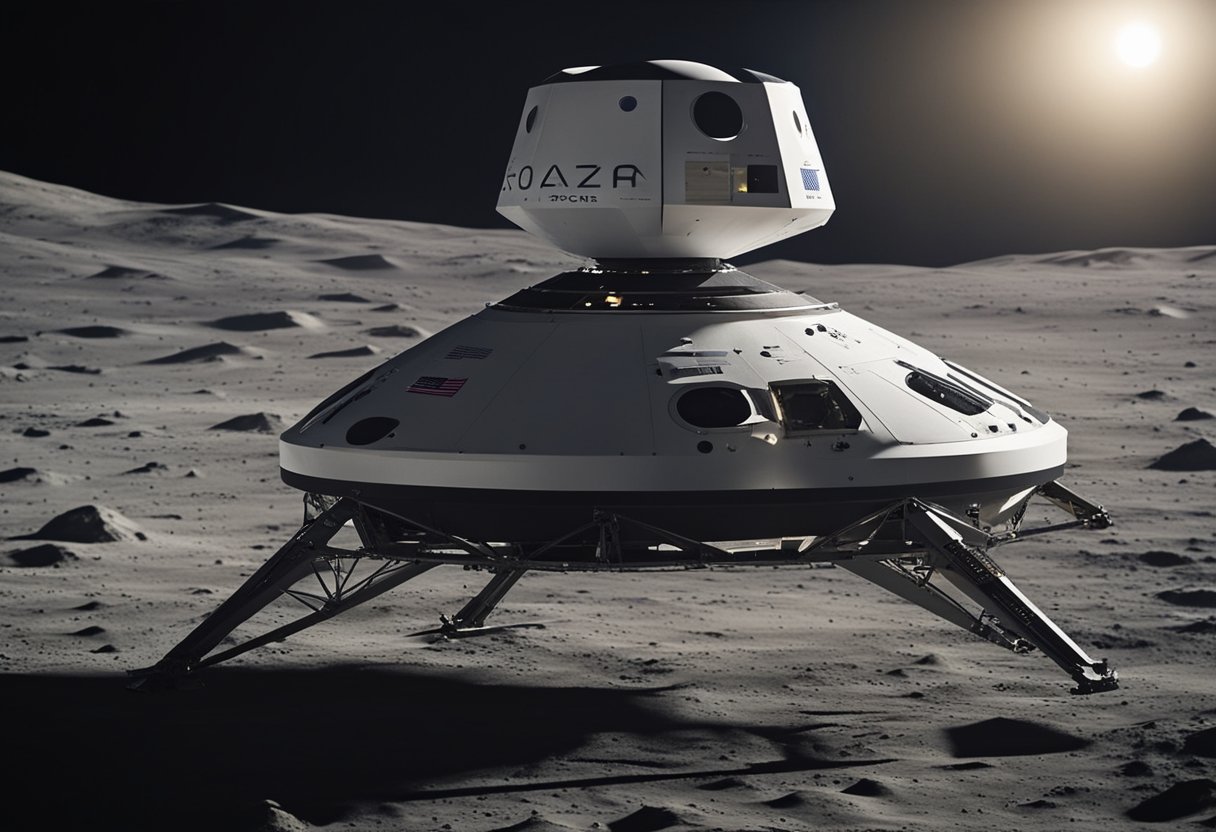
In preparing for lunar tours, we utilise the leading-edge Starship spacecraft and Raptor rocket technology. Our engineering prowess ensures customers a secure and revolutionary journey to the Moon.
The Starship spacecraft represents the pinnacle of SpaceX’s innovation, designed to safely carry passengers on lunar expeditions. Its pressurised cabin is engineered with life support systems and spacious accommodation, ensuring both comfort and safety for our travellers. The massive windows offer unprecedented views of space and the lunar surface, enhancing the awe-inspiring experience of space travel.
Equipped with SpaceX’s Raptor engines, our rockets boast advanced propulsion that provides both power and efficiency for lunar voyages. The Falcon Heavy rocket, renowned for its immense thrust capability, delivers the necessary force to escape Earth’s gravity, propelling the Starship spacecraft towards the Moon. Our commitment to excellence in engineering is evident in every aspect of our rocket and spacecraft design, which undergo rigorous testing to meet the highest safety standards.
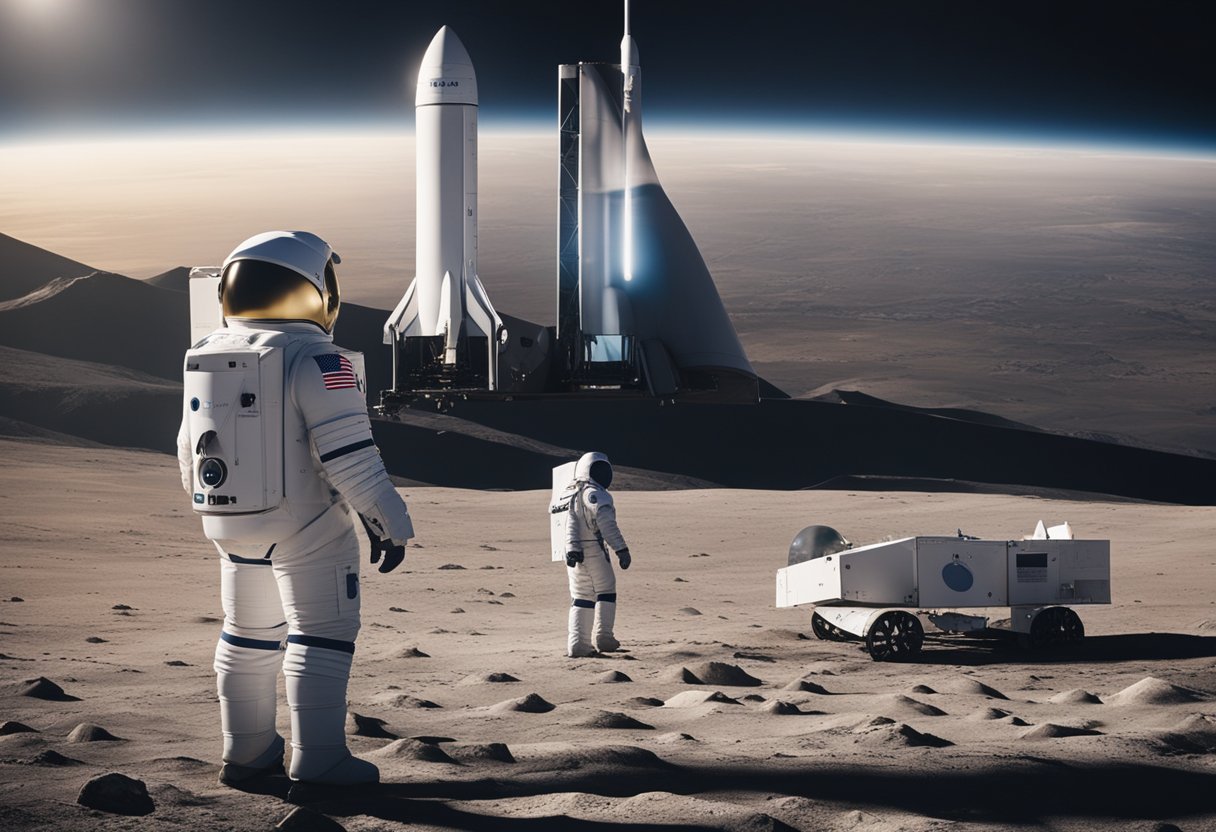
In the evolving landscape of space exploration, strategic partnerships have become instrumental. SpaceX, with its advanced capabilities and vision for space travel, actively collaborates with governmental agencies and private entities to pioneer lunar excursions.
We’re witnessing an unprecedented partnership between SpaceX and NASA, reflecting a shared goal to further lunar exploration missions. Under NASA’s Artemis programme, SpaceX has been selected to provide the transportation means for astronauts destined for the Moon. This collaboration leverages SpaceX’s Starship spacecraft, envisioned to safely and efficiently transport crew members to lunar orbit and beyond. The Artemis Moon landing contract solidifies SpaceX as a critical player in the United States’ renewed lunar aspirations.
The private spaceflight industry is also a cornerstone of SpaceX’s lunar ambitions, expanding opportunities for commercial ventures in outer space. Through initiatives like those at SpaceVoyageVentures.com, the exciting potential of lunar tourism is taking shape. Prospective voyagers eagerly anticipate the roll-out of commercial missions, which promise a new era of private space exploration. SpaceX’s engagement with industry partners, such as tech and aerospace companies, is essential in developing the required infrastructure, technology, and support systems for sustainable moon missions.
Working in tandem, these partnerships and collaborations are not only fuelling advancements in space travel but are also shaping the future of human expansion into the final frontier.
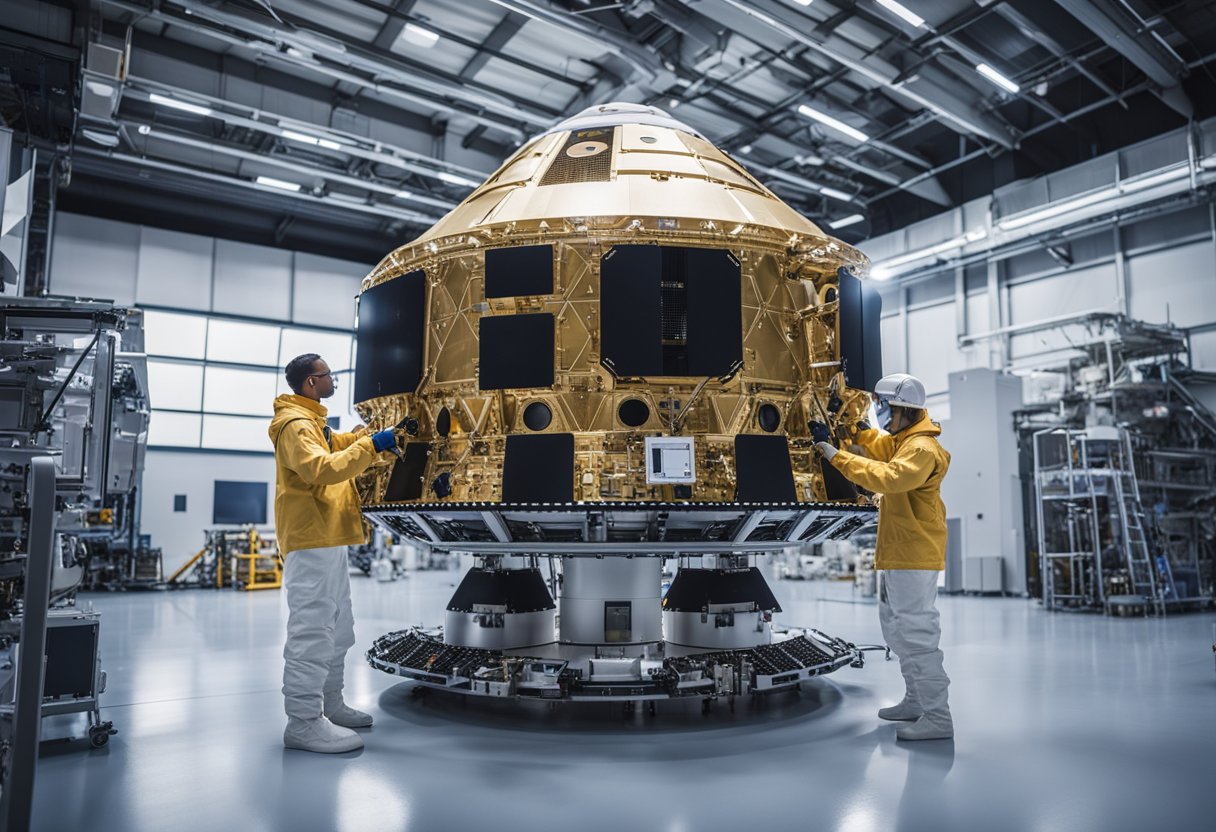
In order to embark on a lunar tour with SpaceX, there are specific preparations that both astronauts and passengers must undertake. We’ll detail the training regimen for astronauts and outline the selection and application process for prospective lunar tourists.
Astronauts selected for lunar missions undergo a rigorous training programme. They hone their skills in a variety of environments designed to simulate the conditions they will face in space, including microgravity and the lunar surface. Core aspects of their training include:
Passengers looking to join a SpaceX lunar tour are subject to a selection process that focuses on ensuring their safety and compatibility with the demands of space travel. The application process involves the following steps:
Prospective passengers are carefully vetted to ensure that they can not only withstand the rigours of space but also contribute meaningfully to the mission’s objectives.
As we embark on the journey of unlocking the moon for tourists, it has become crucial to examine the economic model that supports this nascent market. The convergence of private investment and aspirational travellers charts a new path for space exploration, significantly influencing both ticket prices and potential revenues.
We understand the anticipation surrounding the cost of a trip to the moon. Currently, the pricing strategy for lunar tourism is indicative of an exclusive experience, shaped by the extensive resources needed for such missions. The seats offered for these pioneering journeys come with a hefty price tag, where individual tickets are positioned within the market as high-value items.
Reservations for lunar trips necessitate a significant upfront financial commitment. For instance, our insights on recent sales show tickets having been priced at astonishing figures, sometimes even reaching up to $100 million per seat, as initially offered by Space Adventures. This clearly aligns with the premium nature of the service, where the intersection of scarcity and novelty drives the market value. Leveraging our insights from SpaceVoyageVentures.com, we can confirm that reservations are tightly controlled and are treated as coveted artefacts of modern space aspiration.
The revenue generated from these sales is pivotal in fuelling the future of lunar tourism. By setting the stage for a high-entry cost, we establish a foundation for the economics that will drive advancements and ultimately, aim to broaden the markets to welcome a more diverse clientele. This progression will, in turn, potentially reduce costs and democratise access to space travel, allowing for a more inclusive future in lunar exploration.

As we embark on this exhilarating journey, we invite you to join us in experiencing a week-long trip that orbits our celestial neighbour. With meticulously designed onboard facilities and bespoke accommodations, the tour redefines space travel, bringing the concept of lunar tourism to life.
Day 1: Departure and ascent into lunar transfer trajectory
Day 2-3: Journey to lunar orbit, including scheduled course corrections and space adaptation activities
Day 4: Entering lunar orbit, with windows offering unprecedented views of the Moon’s surface
Days 5-6: Full orbit days, with various modules providing educational and recreational activities
Day 7: Preparations for return journey, with the final opportunity to observe the Moon’s far side
Note: The itinerary is subject to change due to mission requirements or unforeseen circumstances.
Habitats: State-of-the-art living quarters designed for comfort and safety, accommodating personal space and group interactions.
Recreation: Facilities equipped with leisure and educational material, such as a zero-gravity library and observation lounges.
Dining: A variety of meal plans, with cuisine crafted to suit a zero-gravity environment, keeping nutrition and taste balanced.
Health and Safety: Comprehensive medical bay staffed by qualified personnel, alongside regular health checks and exercise routines.
For more information on our tour packages and reservation details, please visit SpaceVoyageVentures.com.
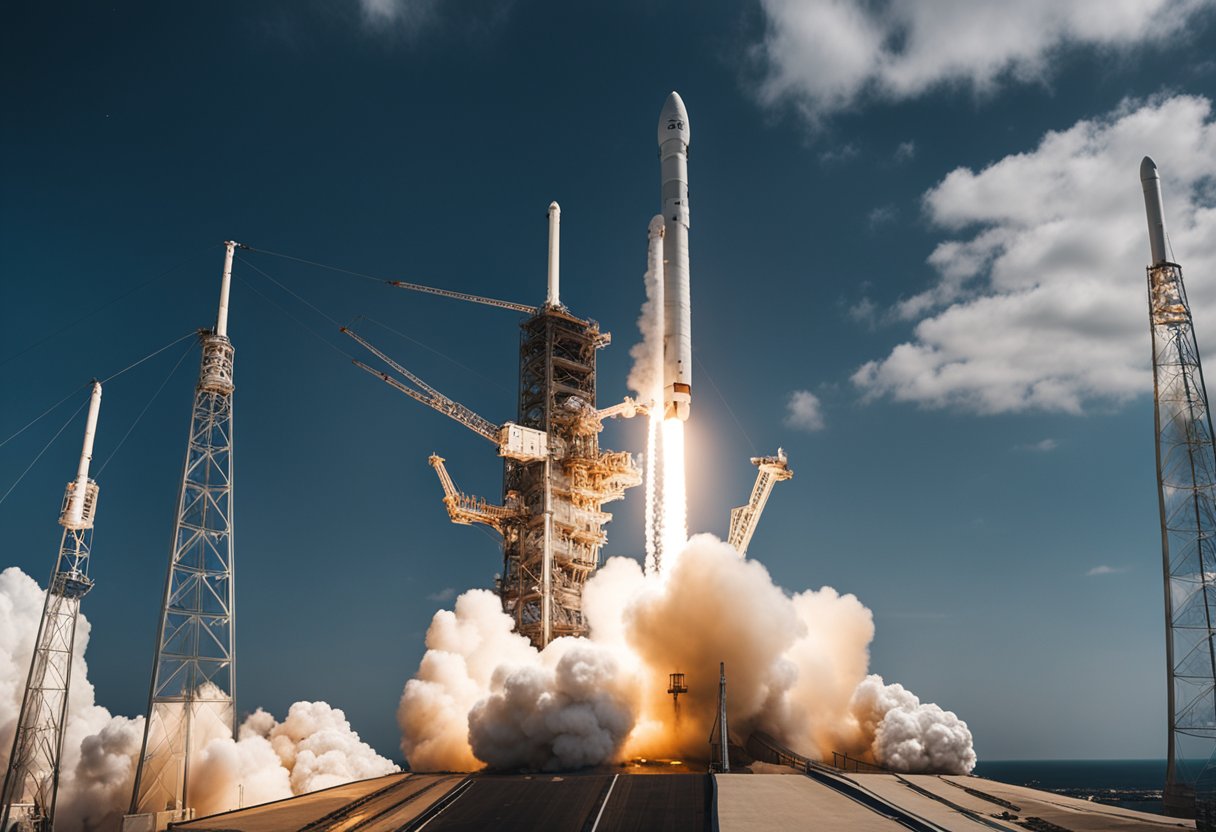
We must understand the intricacies of SpaceX’s lunar tourism mission, which involves complex technical feats such as the stage separation of the launch system and the careful integration of the lunar lander.
The launch system for a lunar mission is a marvel of engineering, involving SpaceX’s Starship as a staple component. The process of stage separation is crucial, as it involves discarding used parts of the rocket to lighten the load and allow the spacecraft to continue on its journey. This is achieved through precise timing and accurate control of rocket engines. The Falcon Heavy, anticipated to launch the Dragon 2 spacecraft, is designed to execute a “free return” trajectory, closely flying by the moon before looping back to Earth.
The integration of the lunar lander is another complex challenge, requiring both ingenuity and precision. This component is crucial for the safe transport of passengers to the lunar surface and back. To ensure a successful mission, SpaceX must rigorously test and refine the lander’s systems, from propulsion to life support.
By addressing these technical challenges, we continue our commitment to facilitating lunar exploration through reliable and safe space travel.

We are entering an unprecedented era of space travel, where the prospect of lunar tourism is closer to becoming a reality. The development of the infrastructure necessary for these historic missions is well underway, with SpaceX leading the charge.
In Boca Chica, Texas, we find the heart of SpaceX’s construction efforts for the missions that will one day carry passengers on lunar tours. This facility is the birthplace of the groundbreaking Starship—the vehicle that has been designed with the lofty goal of transporting humans to Mars and beyond. The launch site here plays a critical role, as it is from this location that Starship will embark on its test flights and, eventually, its maiden voyages to the Moon.
The infrastructure established at Boca Chica is not only impressive but also integral to SpaceX’s strategy of rapid iteration and development. A glimpse into this bustling facility showcases the dynamic environment where aerospace history is being written. With rocket prototypes being assembled and tested, the Texas site is a clear demonstration of SpaceX’s commitment to advancing space technology.
Our focus remains steadfast on the continued growth and evolution of Boca Chica as a cornerstone of SpaceX’s interplanetary ambitions. The infrastructure we’re developing in Texas is paving the way for the next great leap in human space exploration, setting the stage for when we take our first steps on the surface of Mars.

We recognise the significance of public engagement and thorough media coverage in the burgeoning era of lunar tourism spearheaded by entities like SpaceX.
Live Launch Broadcasts:
Our live launch events are monumental occasions, drawing audiences from around the globe. We ensure that these moments are accessible in real-time, often through partnerships with mainstream media outlets like CNN. It’s our goal to provide comprehensive coverage that captures the excitement of every liftoff.
Media Involvement:
The media plays an essential role in documenting the journey of lunar tourism. From issuing press releases to accommodating journalists onsite, we ensure the narrative of space travel is as vivid and accurate as possible.
For enthusiasts unable to attend, live streaming on platforms like SpaceVoyageVentures.com offers an immersive experience. Additionally, the #dearmoon project enables us to curate personal stories and interactions, making the narrative of space travel more relatable.
Live TV Coverage:
Significant moments are often broadcast live on TV, with channels scheduling special programming to cover the events. This includes expert commentary, interviews with astronauts and scientists, and minute-by-minute updates.
Key Moments:
Online Videos and Recaps:
By actively involving the public and the media in our journey, we ensure that every milestone in lunar tourism is not just an achievement for us but a shared experience for all humanity.
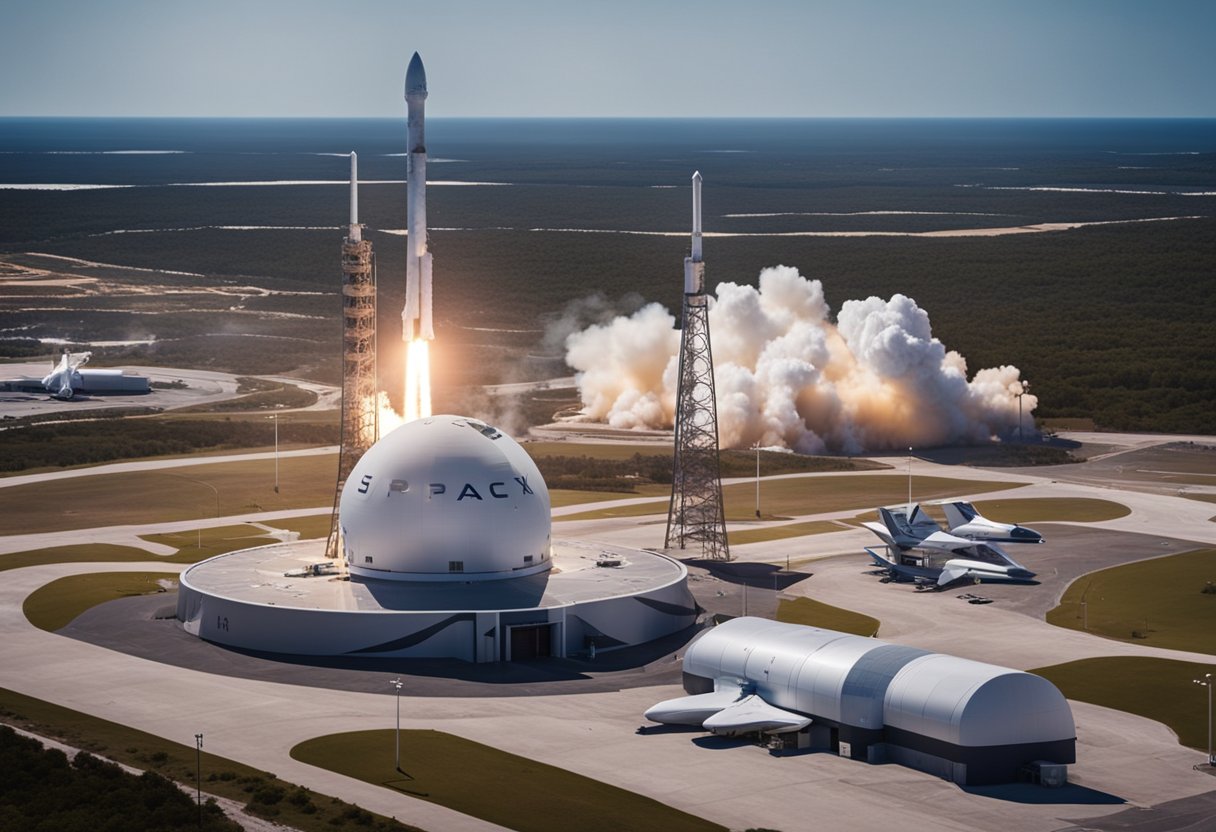
SpaceX has reshaped our approach to out-of-this-world travel, aiming to make lunar tours a reality and setting sights on even more distant targets.
We are witnessing a transformative era in space travel, with SpaceX at the forefront of lunar and interplanetary exploration. Envisioning the Moon as a stepping stone to further cosmic endeavours, SpaceX emphasises the critical nexus between lunar tours, future Mars missions, and the development of space stations.
Tourism beyond our atmosphere is moving from the realm of science fiction into tangible reality, offering civilians the chance to experience the marvels of space firsthand. Our Moon, an object of wonder since time immemorial, is on the cusp of becoming a regular destination for private tourists. Leveraging the pioneering spirit of ventures like SpaceX, SpaceVoyageVentures.com chronicles the potential journeys yet to come — an archive of past milestones and a glimpse into the future of space tourism.
In the coming years, we anticipate the establishment of crewed platforms in lunar orbit, acting as springboards for both tourism and exploratory missions. The concept of a commercial space station isn’t far-fetched; it’s a clear goal on our collective horizon. Meanwhile, Mars beckons with its rust-hued landscape, representing the profound potential for human expansion and scientific achievement. We’re not just aiming for the Moon; we’re looking to ignite a multi-planetary presence for humanity — and it all begins with the trailblazing efforts of today’s space entrepreneurs.
Taking a leap from science fiction into science fact, there’s an undeniable excitement in the air about what’s coming next. Through partnerships and advancements in technology, space tourism could soon become a familiar term in our lexicon, as integral to travel as the most favoured terrestrial destinations.
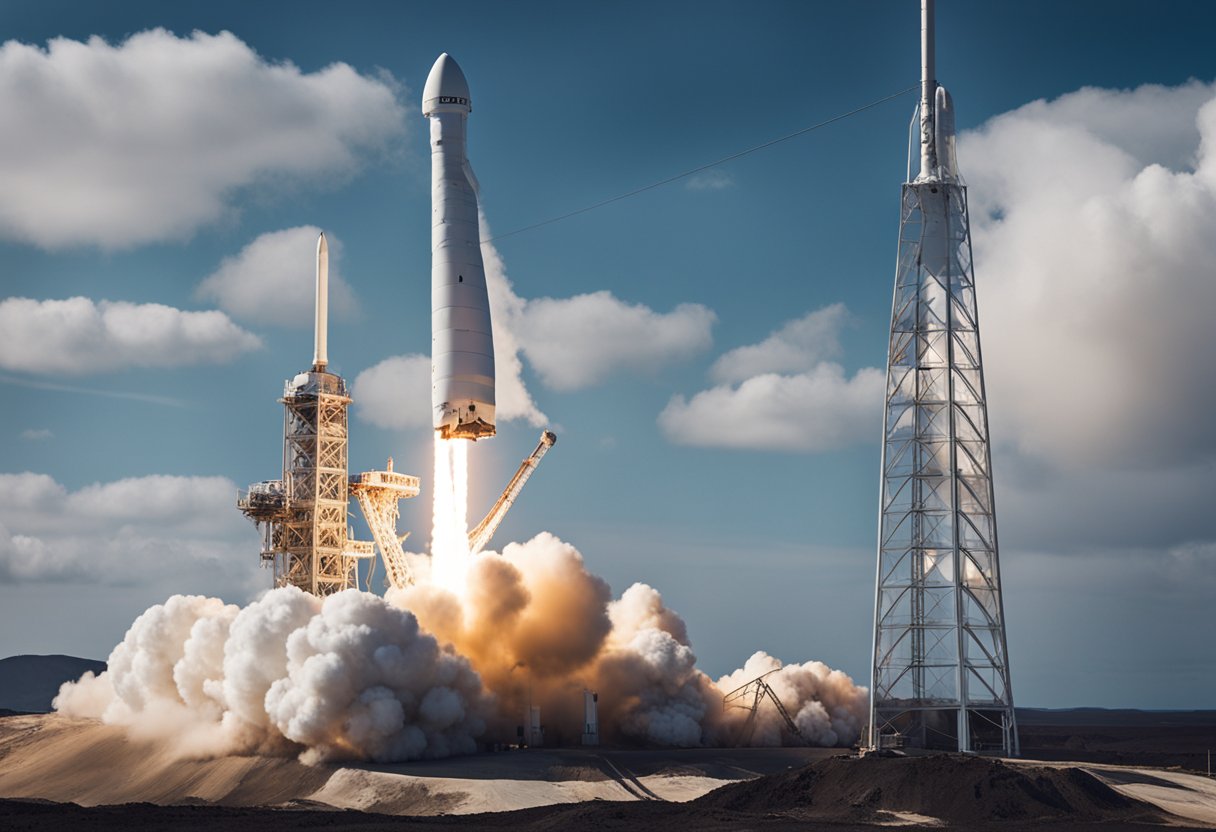
As we discuss the potential for SpaceX lunar tours, we must also consider the environmental and regulatory factors that influence such pioneering ventures. Regulatory bodies, like the Federal Aviation Administration (FAA), play a crucial role in overseeing the operations of space launches. The FAA has set forth conditions to ensure the environmental assessment of these launches safeguard our planet and its orbit.
The environmental impact of launching spacecraft is significant, encompassing wildlife concerns and pollution management. It’s imperative to balance the excitement of space exploration with our responsibility to protect Earth’s environment. SpaceX’s Starship, the vehicle earmarked for lunar tourism, has drawn particular attention from environmental agencies due to its size and the potential consequences of its launches and possible malfunctions that might result in explosions.
Launch Delays: Delays can occur due to regulatory reviews, with assessments and conditions that need to be met. This ensures that dangerous debris doesn’t accumulate in orbit, posing risks to other spacecraft and satellites.
Orbital Impact: Any venture into space must also take into account the long-term effects on Earth’s orbit, which include space debris and the other potential consequences of space tourism on our planet’s atmosphere and surrounding celestial environment.
Furthermore, initiatives like SpaceVoyageVentures.com are actively documenting the development of space tourism, from envisaged future trips to those on the cusp of availability. It’s crucial that, as we share our passion for space travel, we also disseminate awareness about the stringent regulations that are designed to protect both our planet and the integrity of space tourism as a sustainable enterprise.
We have compiled a list of frequently asked questions to address the most common inquiries regarding SpaceX’s lunar voyages.
The exact fare for a lunar voyage with SpaceX has not been publicly disclosed, but such a pioneering experience is expected to carry a premium price.
The Dear Moon project, which is a lunar tourism mission funded by Japanese entrepreneur Yusaku Maezawa, is anticipated to launch in 2023.
SpaceX’s inaugural lunar expedition is slated for the year 2023, facilitating a significant milestone in private space travel.
Yes, civilians have the potential to travel to the Moon with SpaceX, particularly through initiatives like the Dear Moon project, which is intended to include private individuals.
While the costs may vary, a tourist flight to space with SpaceX could run into the millions of dollars, given the complexity and exclusivity of space travel.
To our knowledge, SpaceX’s moon mission has not been cancelled and remains an active endeavour within their upcoming missions.